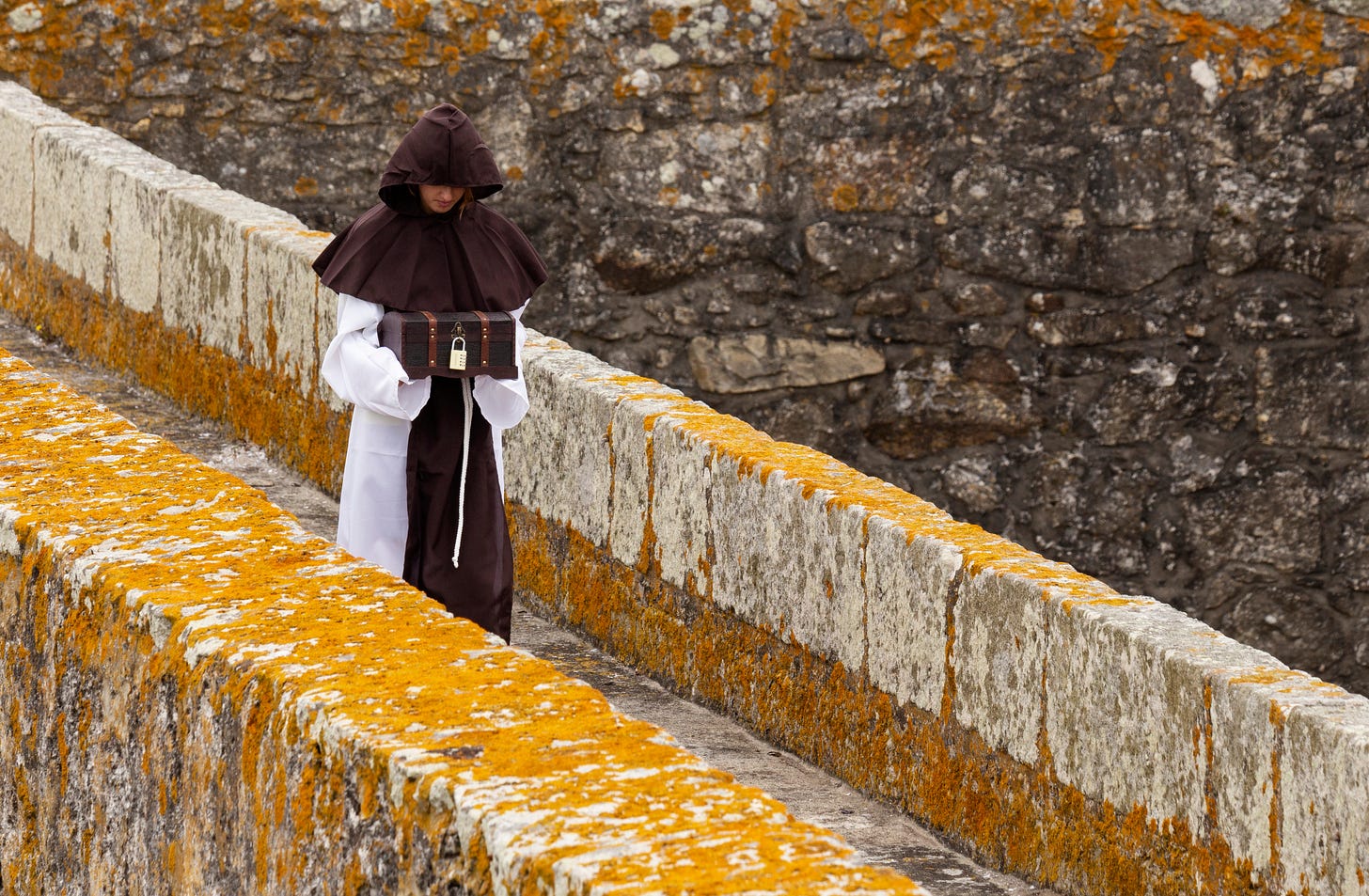The Sixth Mark of a New Monasticism
Intentional Formation / Old Novitiates
Understand Physical Realities
Accept and Adapt
Live within Gaia
As the Fossil Fuel Age winds down to its confusing but inevitable end it is likely that there will be a monastic revival. In this series of posts we explore what such a revival may look like using the ideas presented in the 2024 Posbury St. Francis Annual Lecture, given by Dr. Bethany Sollereder as a framework. The lecture’s title was Radical Hope: the roots of courage in inevitable climate change.
Dr. Sollereder talked about how monasticism is one response to ‘inevitable climate change’. A screen shot of one of her slides is shown below. In it she identifies ‘12 Marks of New Monasticism’. We discuss each of these 12 marks in the context of an Age of Limits.
The posts in this series are:
Mark 1: Abandoned places of Empire,
Mark 2: Sharing economic resources,
Mark 3: Hospitality to the stranger,
Mark 4: Lament for racial divisions,
Mark 5: Humble submission,
Mark 6: Intentional Formation,
Mark 7: Nurturing common life,
Mark 8: Celibacy,
Mark 9: Geographical proximity to community members,
Mark 10: Care for God’s earth,
Mark 11: Peacemaking, and
Mark12 : Commitment to a discipline contemplative life.
In this post we discuss the sixth ‘Mark’:
Intentional formation in the way of Christ and the rule of community along the lines of the old novitiate.
Novitiates
In monastic traditions, the word novitiate refers to the initial stage of training and preparation that a person undergoes when they consider joining a monastic community. It is a period of discernment, spiritual formation, and education in the way of life of the religious order. During this time, the novice lives in the community, but is not yet fully committed through solemn vows.
At the end of the novitiate, if both the novice and the community agreed that the person is suited to the monastic life, he or she can take temporary or final vows to fully enter the order.
The Old Novitiate
The term ‘old novitiate’ refers to earlier, traditional forms of the novitiate, as practiced before modern reforms, especially within the Roman Catholic Church. The following were features of the old novitiate.
It often lasted for a specified period, typically one to two years, during which time the novice was closely observed and trained.
There was a focus on discipline and obedience. The novitiate emphasized strict discipline, community rules, and the spiritual practices of the order, such as prayer, meditation, and manual labor.
Novices were often secluded from the outside world so that they could focus on spiritual growth and learning. This sometimes involved strict silence and limited communication with family.
In recent years some Christian monastic traditions have become more flexible and less austere, reflecting changes in religious life post-Vatican II for Catholic orders. Sollereder suggests that there will be a return to the ‘old’ novitiate ― the old, stricter ways of training and accepting new entrants to the monastic life.




